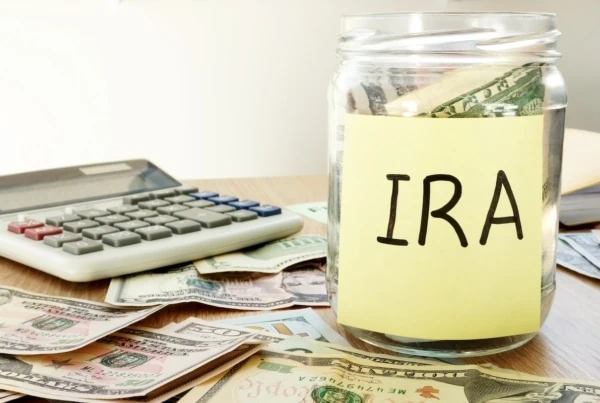Did you accomplish the American dream? Do you have your large home with a white picket fence?
OK, the color of the fence might vary, but as many homeowners near retirement, they realize that the four walls around them might be larger than what they’ll need once they step down from their careers. That could be for any number of reasons—too much space, perhaps, or too much physical upkeep. They might simply not be able to justify paying such high property taxes once they’re fully retired.
Whatever it might be, many Americans choose to downsize their homes—meaning they move into a smaller residence than where they lived before—shortly before or in retirement.
Downsizing can boost your retirement savings and make your life simpler. But as is true for any action, if you’re going to do something, you should do it right. So if you plan to downsize in retirement, you want to maximize your earnings and minimize stress. And this list of tips will help you do exactly that.
Helpful Tips for Downsizing in Retirement

You might have moved many times throughout your life, but moving as a retiree and reducing your living space comes with a unique set of challenges.
You likely own more items than you ever have before. As you get older, you might have new requirements for your home than you previously did. But you also might have more financial resources than you did when you were younger.
The following tips consider these advantages and disadvantages to help make your transition as seamless as possible.
1. Move Before You Need To
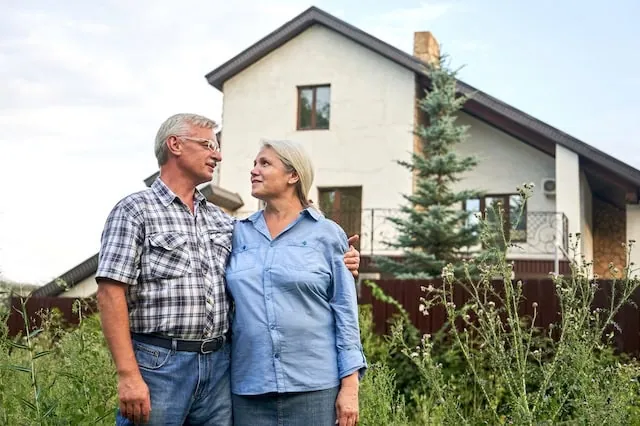
If you know for certain you’ll eventually need to downsize, it might make sense to move sooner rather than later.
A Zillow Consumer Housing Trends Report showed that in 2021, the median age of a seller-buyer who downsizes to a smaller home was 55 years old—well before retirement for most people. That doesn’t mean age 55 is necessarily the right age for you, but it does mean a lot of people are downsizing long before they call it a career.
A few potential signs it’s time to downsize include (but aren’t limited to):
- Your monthly expenses feel too high.
- You’re starting to struggle with home maintenance.
- You’re no longer tied to the area because of work or family.
- You have unused rooms.
If you’re a retired empty-nester, you might have no reason at all to postpone downsizing. The sooner you move, the sooner you can start saving money on mortgage and utility costs. It likely will be physically easier to make the move while you’re younger, too.
Consider downsizing while it’s still a choice, rather than a financial or medical necessity. This allows you more time and flexibility to sell your current home (and find a new one) for a reasonable price, as well as to process any emotions you might have about the move.
Related: When Should You Take Social Security?
2. Become More Minimalist Now

When you downsize your home, you naturally have to downsize your stuff.
Even if your current house isn’t bursting at the seams with furniture, decor, and mementos, you’ll probably need to get rid of a few things before you move into a smaller residence—it’s unlikely to all fit comfortably.
My advice? Don’t wait until you’ve found a new place, then try to go on a stressful, fast-paced binge. Try to become more minimalist now in anticipation of your move.
Start by giving away items to family members who want them. Do you have family heirlooms you plan to pass down? Why wait? You can give some of those cherished items away now while you can enjoy handing them on to the next generation.
Have high-value objects your family doesn’t want? You might be able to sell them at a garage sale or online marketplace, such as eBay. Importantly: It can take time for things to sell, especially if you don’t have a good feel for pricing, so it’s better to list them when you have time rather than rush to unload them and ultimately have to give away or dump much of your inventory.
Anything you have that’s useful, but that you don’t want to/can’t give away or sell, consider donating to local charities. Homeless shelters often accept clothing donations and schools may be willing to take crafting materials. You can save money at thrift stores if you choose one that offers a discount in exchange for a donation. (Just don’t undo the financial benefit by taking more things home with you.)
Do you want to get serious about saving and planning for retirement? Sign up for Retire With Riley, Young and the Invested’s free retirement planning newsletter.
3. Evaluate Your Space Needs

Just don’t go overboard and get rid of everything as soon as possible. Because you’ll need to weigh how much you want to downsize with how much you realistically can.
Let’s say you currently live in a four-bedroom house. You dream of going full minimalist and dropping down to a one-bedroom apartment.
It sounds exciting, but how ideal would that be for your spouse who still has a few years’ left in their career and works from their home office? If you’re a retiree with pets, having your own outdoor space may be a requirement. Those who plan to babysit grandchildren regularly might need an extra bedroom and ample play room.
On the flip side, a significant downsize might be in order. You might not love playing host and plan to extensively travel during retirement. It might just be you and no spouse. For some people, a small apartment or condo is plenty sufficient—and more space actually creates too much necessary upkeep to handle.
Fully consider the lifestyle you have in mind before you downsize, lest you commit to something too drastic—or fail to downsize enough.
Related: RMDs Too High? 6 Ways to Reduce Them at Age 73
4. Measure Your Furniture
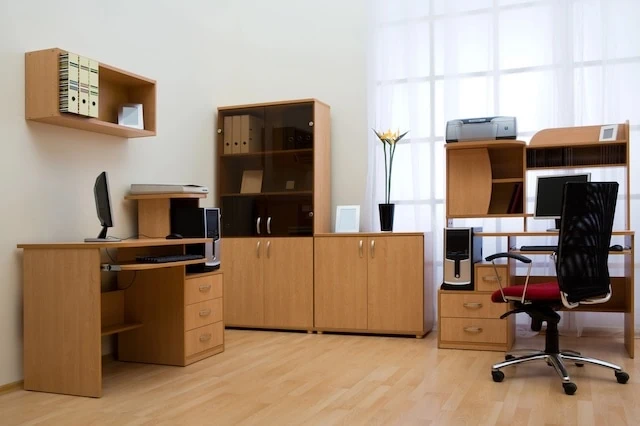
In a similar vein, you’ll need to determine which furniture is invaluable and will need to survive the downsizing. Then measure each item so you’ll know how and where it will fit as you evaluate potential new homes.
After all, you don’t want to pay movers to transport your grand piano just to discover it simply won’t fit.
Knowing which items you’ll likely keep (and which ones you likely won’t) will give you additional time to sell those items rather than simply dumping them or giving them away. That much-needed cash will come in handy for the upcoming move, picking out any new furniture you might need, or to simply sock away for a rainy day.
If you’re downsizing in a hurry and don’t have time to determine what will ultimately survive the move, you could temporarily rent a storage unit. But that’s a potentially costly choice—Move.org research puts the average cost of a storage unit at $180 per month ($2,160 annually).
A common reason people downsize is to save money. Paying for storage is counter-productive.
Related: 10 Senior Discounts for Restaurants + Grocery Stores
5. Plan for Unexpected Expenses
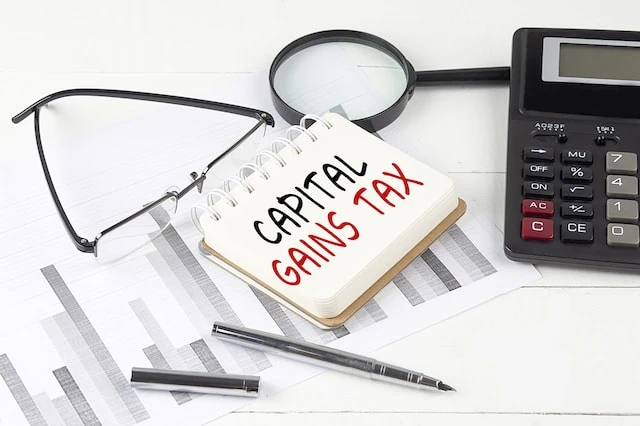
The broad-strokes economics of a downsize are straightforward: Large residences typically cost more in mortgage/rent, utilities, insurance, and upkeep than smaller residences. Also, you expect to sell your larger home for more than what you’ll need to purchase your smaller home.
While that broader math typically pans out, you need to make sure you’re accounting for a variety of unexpected expenses.
One is cost of living—a smaller home isn’t necessarily going to be less expensive if you’re moving to somewhere with higher general real estate prices. Your monthly housing costs might jump if you move from a city/state with low property taxes to somewhere you have to pay through the nose.
Also, remember that homesellers typically bear the costs of real estate agent commissions, plus you might need to shoulder legal fees for a real estate attorney, escrow and wire transfer fees, and more.
Another cost to consider is capital gains taxes. When selling your primary residence, you might qualify to exclude some of that gain from your income—up to $250,000 if you’re single, or $500,000 if you’re married filing jointly. In other words, if your home’s value increased by less than that amount, you won’t need to pay capital gains taxes for selling your home. But if your home increased substantially in value and your profit exceeds that exemption, you might need to absorb a hefty tax hit.
Lastly, you might face higher moving costs than you’re accustomed to. If you’ve lived in your home for a couple of decades … well, a few pizzas and beers for your friends probably won’t work anymore. According to Moving.com, the average cost of a local move is $1,250, while a long-distance move is closer to $4,900! (Averages based on a two- to three-bedroom move of approximately 7,500 pounds.) That doesn’t include any packing services or the customary tip.
Related: What Are the Average Retirement Savings By Age?
6. Keep Accessibility in Mind
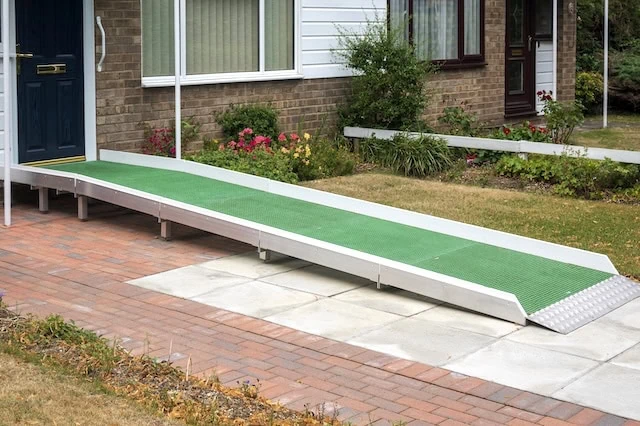
A popular reason for downsizing is to live somewhere it’s easier to age in place—that’s why you’ll often see people trade two- or three-story houses for smaller ranch-style homes.
But even if accessibility isn’t currently an issue for you or your partner, it might be in the future. So it pays to think ahead and keep accessibility in mind as you choose your downsized residence. That means either selecting a new home that already has accessibility features, or plan to make accessible home renovations right away. A few common features include:
- Grab bars in the shower and near the toilet
- Sufficient lighting throughout the home
- Induction cooktops
- Soft flooring
- Touchless water faucets
After all, you don’t want to move again in a few years once you realize your home isn’t set up for older adults.
By the way, it’s easy to forget location as an accessibility consideration. Is the new home you’re considering near a bus route or walking path? Where’s the nearest hospital? Pharmacy? Grocery store? Even short trips out of the house can be more difficult as you age; logistical issues that seem small now can be amplified once you retire.
Related: How Long Will My Savings Last in Retirement? 4 Withdrawal Strategies
7. Research Your Current Home’s Worth

Depending on when you bought your home, today’s real estate market might look a lot different.
It’s vital to properly price your home. If you price too low, you could miss out on a large sum that could become an essential part of your retirement nest egg. If you price too high, you might not sell for a long time (if at all!) before you have to pull back your ask. If you buy your new home before you sell, you’re on the hook for the mortgage, property taxes, and other expenses on two residences. Alternatively, being unable to sell could delay your ability to move to a residence with the amenities you want or need.
Just like Goldilocks tasting porridge, you want your listing price to be just right.
When it comes to your home’s worth, don’t just trust the neighbor down the street or your nephew that got their real estate license last month. Start by using home-value estimators on websites such as Redfin, Zillow, and Realtor.com. Once you get serious, consult with real estate agents who can draw hard data on what similar houses have recently sold for in your area.
Related: How to Invest for (And in) Retirement: Strategies + Investment Options
8. Redesign Your Budget
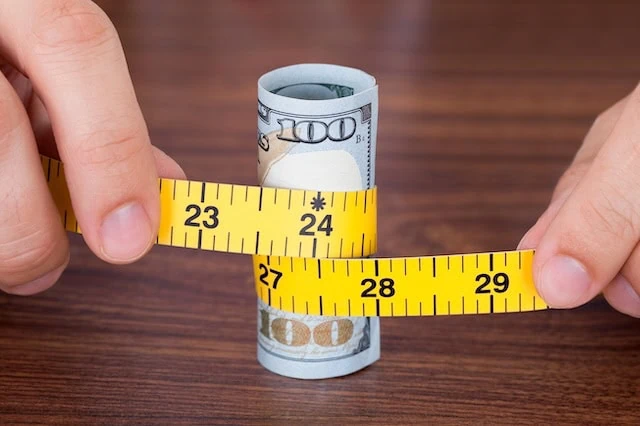
Once you downsize, you’ll need to reconfigure your retirement budget.
Good news! It should be a happy chore, as your costs should go down overall. Assuming you stay in the same area, a smaller home likely means a smaller rent/mortgage, property taxes, utilities, and maintenance costs.
A few costs might go up or change, however. For example, you might have new condo fees. Or you might no longer have the space to buy things in bulk. You might need to add condo fees into your budget. Or your transportation costs might shift if you sell your vehicle and rely on more public transportation instead (or vice versa).
Updating your budget right away will give you a better sense of how long your savings will last under the new financial regime. From there, you can start planning out vacations, family visits, and more.
Do you want to get serious about saving and planning for retirement? Sign up for Retire With Riley, Young and the Invested’s free retirement planning newsletter.
9. Digitize Important + Sentimental Documents
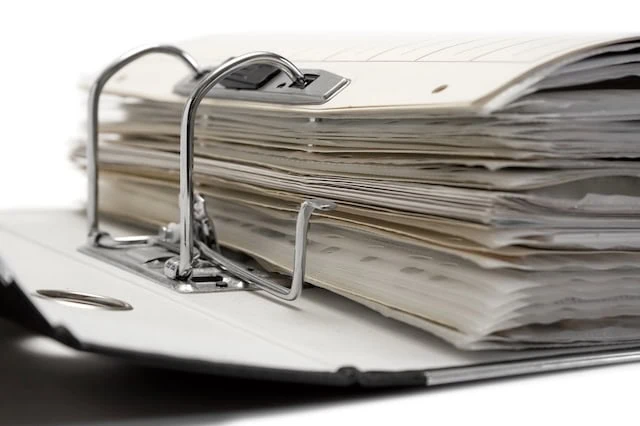
Papers, forms, and documents are among the most frustrating forms of clutter, the easiest things to lose … but also some of the most important items to go through.
Before even move, even if you’re not downsizing, consider reviewing your documents and making digital copies of anything that’s important. This might include insurance policies, ID cards, birth certificates, passports, and more. While you can usually get new copies of documents later, it’s useful to have copies on hand if you lose some in the hubbub of a move. Meanwhile, you can shred and dispose of any documents that have outlived their usefulness.
Consider taking photos of sentimental papers so you can get rid of them as well. You don’t want your reduced home space filled with old programs from your daughter’s dance recitals and all of the Christmas cards you’ve accumulated over the years. Photographing these sentimental objects can make it easier to throw them out without feeling like the memory will go away with it. You can always look back at the photographs.
Related: Are You Financially Stable? 10 Signs of Financial Health
10. Talk to a Financial Advisor

Many people find it useful to discuss their downsizing plans with a financial advisor.
A financial advisor can provide commonsense financial advice, such as how much house you can afford or what to do with any excess real estate windfalls.
They should be able to discuss any tax implications, too—not just of moving, but retirement in general. This is particularly useful if you’re moving to one of the states that tax Social Security payments or a state with complicated property tax laws. If your downsizing involves gifting valuable objects, such as a car, a professional can also help you navigate gift tax rules, too.
Not to mention, your advisor can help you with financial basics too, such as fine-tuning your budget (and learning how to live within it).
Related: Can You Receive Social Security Benefits While Working?
Want to Work With Riley?
Riley Adams is a licensed CPA and financial advisor holding a Series 65 license. He’s a fee-only fiduciary with investment advisory services offered through NewEdge Advisors. If you’d like to learn more about the services Riley can provide and how he might be able to help with your needs, schedule a call.
Want to talk more about direct indexing? Schedule a call with Riley to discuss what a program might look like for you.
Related: How to Choose a Financial Advisor








